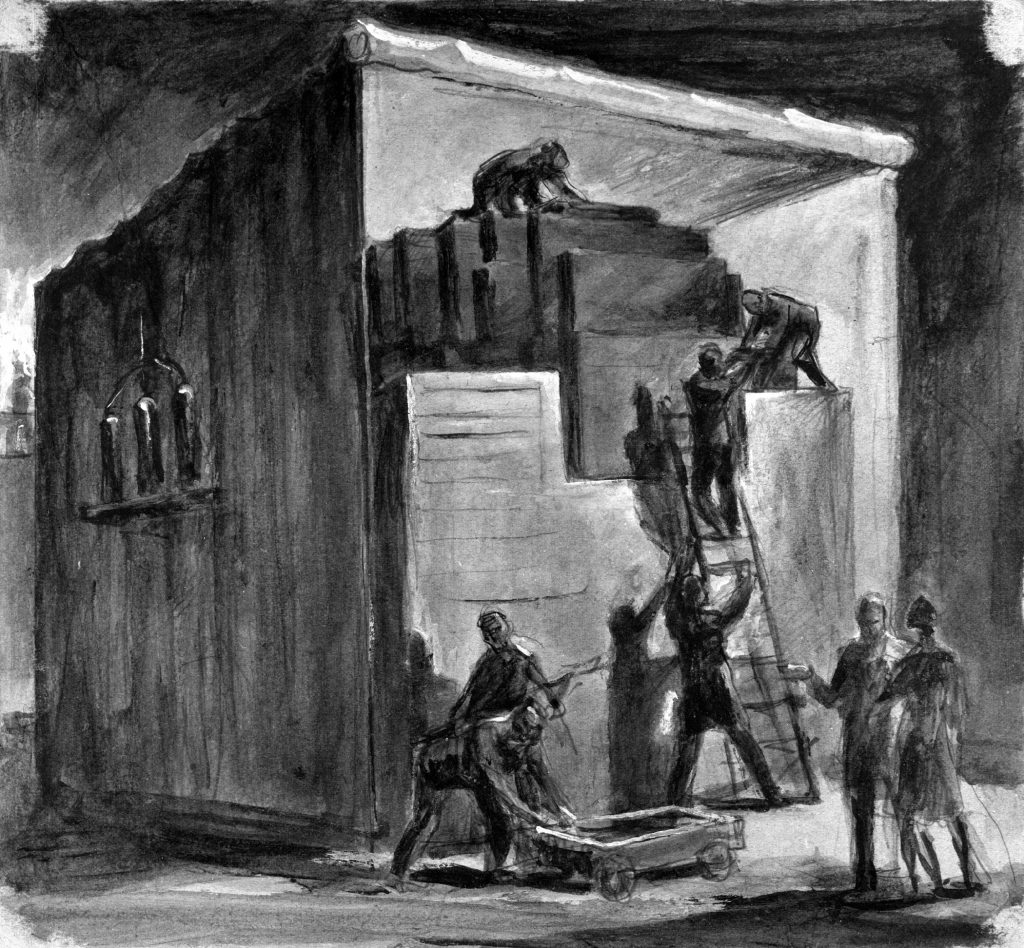Bernard T. Feld was a research associate at the University of Chicago’s Metallurgical Laboratory (“Met Lab”) during the Manhattan Project. He also worked at Oak Ridge and the Los Alamos Laboratory at the University of California.
In 1941, he took a break from his graduate studies to join physicists Enrico Fermi and Leo Szilard at the Met Lab. Two years later, in 1943, Feld left the Met Lab to go to work at the Oak Ridge Tennessee site of the Manhattan Project.
At Oak Ridge, Feld helped design and construct the experimental atomic pile and separation facilities. By the end of 1943, Oak Ridge successfully manufactured the first milligrams of plutonium from uranium.
Following his time at Oak Ridge, he went to the University of California, Berkeley to work in its Los Alamos Laboratory. From 1944 to 1946, Feld served as Assistant Group Leader of Critical Assemblies. At the Los Alamos Laboratory, he contributed to the development of the experimental plutonium bomb later tested at Trinity Site.
Early Years
On December 12, 1919, Bernard T. Feld was born in Brooklyn, New York. At the age of fifteen, he entered the City College of New York (CCNY).
Although he entered CCNY as a history major, he changed his focus to physics and graduated with a B.S. in physics in 1939. After graduation, Feld decided to pursue his Ph.D. at Columbia University.
While at Columbia, Feld studied as a graduate student and worked as a teaching assistant to physicists Fermi and Isidor I. Rabi.
Later Years
After World War II, Feld returned to Columbia to finish his Ph.D., which he received in 1945. After receiving his Ph.D., Feld spent six months in Washington, D.C. lobbying with other leading physicists against the military’s control of nuclear research and weapons development.
As a result of their lobbying efforts, the civilian Atomic Energy Agency was established. This agency was committed to peaceful uses of atomic power and to preventing nuclear warfare.
Feld remained a strong advocate for nuclear disarmament throughout the rest of his life. In 1981 at an event before a New Hampshire group, Feld expressed his views on nuclear weapons: ‘Nuclear weapons aren’t good for anything and it’s up to all of us to get this message across and reverse the current trends. To me, the use of a nuclear weapon is not only irrational, it’s immoral.’
At the talk, he also addressed his feelings of guilt for having been a part of designing the atomic bomb: ‘Having been involved in the original sin, I’ve spent the rest of my life trying to atone for it.’
In 1946, he was appointed as a physics instructor at the Massachusetts Institute of Technology (MIT). Working his way up through the department, he became a professor at MIT in 1955.
Between 1961 and 1962, Feld served as acting director of MIT’s Laboratory of Nuclear Science (LNS). He became about the LNS Steering Committee from 1975 to 1982.
From 1975 until 1980, Feld served as head of the physics department’s Division of Nuclear and High-Energy Physics. He retired from MIT in 1990.
Outside of academia, Feld was a proficient writer and editor for a variety of scientific, professional journals, such as the Bulletin of the Atomic Scientists. He also wrote two books, Neutron Physics (1954) and Models of Elementary Particles (1969).
At the age of seventy-three, Bernard T. Feld died on February 19, 1993 in Brooklyn. New York.
For more information about Bernard T. Feld, please see the following references:





